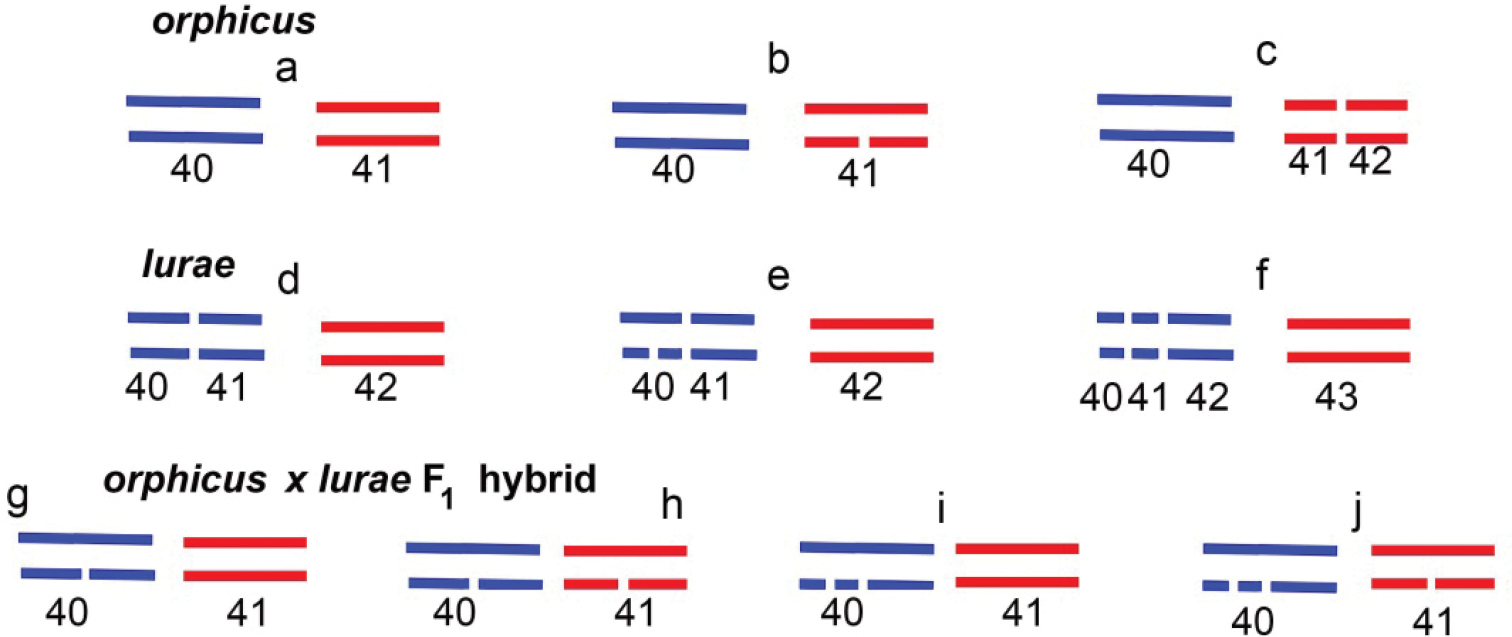
|
||
|
Scheme showing variation in number of chromosomes (lines) and visible elements (=bivalents+multivalents) in MI meiosis in P. orphicus, P. lurae and their putative F1 hybrids. a P. orphicus, homozygous for chromosomal fusion/fission, one pair of fused chromosomes, 41 visible elements b P. orphicus, heterozygous for chromosomal fusion/fission, 40 bivalents and one trivalent; 41 visible elements c P. orphicus, n=42 (homozygous for chromosomal fusion/fission, two pairs of unfused chromosomes; 42 visible elements d P. lurae, homozygous for chromosomal fusion/fission, one pair of fused chromosomes, 42 visible elements e P. lurae, heterozygous for chromosomal fusion/fission, 41 bivalents and one trivalent; 42 visible elements f P. lurae, homozygous for chromosomal fusion/fission, two pairs of unfused chromosomes; 43 visible elements g–j different variants of F1 hybrids. These variants include tri- and quadrivalents; however, the number of visible elements in MI remains 41. |